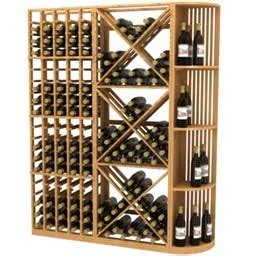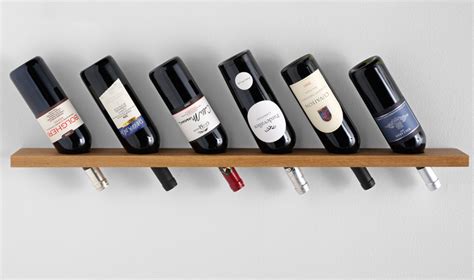
Proper wine storage is crucial for maintaining the flavor and quality of your wine. When wine is stored correctly, it can develop its full bouquet and taste profile. But any slip-ups in storage can lead to spoilage and oxidative damage.
Storing wine isn’t just about finding a cool, dark place to put your bottles. It ensures your wine ages in a stable environment, free from fluctuations that could ruin its delicate balance. Short-term storage has different needs compared to long-term storage, and knowing the differences can protect your investment in fine wines.
Oxidation is one of the most common issues that arise from improper storage. When wine is exposed to air, it can spoil, losing its taste and aroma. Properly stored wine, however, keeps air out, maintaining its quality. This means keeping those bottles lying on their sides to keep the cork moist.
Besides oxidation, temperature fluctuations are a silent killer of good wine. Hourly temperature changes can cause the liquid inside the bottle to expand and contract, which negatively affects the wine over time. Maintaining a steady, cool temperature for both red and white wines is essential to preserve their flavors.
Lastly, don’t underestimate the importance of suitable storage locations. Got a dark closet with a stable temperature? It’s better than the kitchen counter. These small choices make a significant difference in keeping your wine at its best. Being mindful of these factors ensures each bottle reaches its full potential.
Ideal Conditions for Wine Storage
Storing wine isn’t a guessing game. Several key factors play a role in preserving that perfect sip. Temperature tops the list. The ideal range is between 45°F and 65°F, though keeping it steady around 55°F works best. Temperature spikes or drops can wreak havoc on your wine’s flavor.
Humidity is the next critical aspect. Too dry, and the cork can dry out, letting air seep in and spoil the wine. Aiming for a humidity level around 70% helps, but anywhere between 50% to 80% should be fine. This range keeps the cork moist and the wine safe.
Another enemy of your wine is light. Ultraviolet (UV) rays can degrade wine, so it’s best to store bottles in a dark place or at least away from direct sunlight. Even LED lights, if left on constantly, can affect the wine negatively over time. Dark spots or cases for the bottles work wonders here.
Vibrations might seem insignificant, but over time, they can disturb the sediments in wine, spoiling its texture and flavor. Keeping your bottles somewhere stable, away from movement or heavy foot traffic, is key. Vibration-free zones let wine age gracefully.
Choosing suitable storage containers rounds out the ideal conditions. While a dedicated wine fridge is excellent, not everyone has space or budget. Alternative solutions like wine racks in cool, dark closets, under-stair spaces, or basement nooks can work well. What’s important is controlling the environment, not necessarily the container itself. Picking the right spot and using what you have effectively can keep your wine in top shape.
Creative Home Storage Solutions
Finding space at home for your wine collection doesn’t mean sacrificing style or convenience. You can utilize existing spaces creatively. An unused closet or pantry can be transformed into a mini wine cellar with some simple modifications like adding wine racks and insulation.
For those who enjoy a bit of DIY, building your wine racks can be a fun project and an excellent way to customize storage to fit your needs perfectly. You can find many tutorials online that guide you through creating racks from wood, metal, or even repurposed materials.
If DIY isn’t your thing, choosing the right wine fridge is another great option. These fridges come in various sizes, and some are compact enough to fit into a kitchen without taking up too much space. They offer precise temperature and humidity control, ensuring your wine stays in optimal conditions.
Looking at pros and cons of different storage options can also help. Wine fridges offer control and convenience but might be pricier. DIY solutions can be more cost-effective but might not offer the same level of environmental control. Assessing your budget and space available will guide your decision towards the best solution for your needs.
Maintaining and Monitoring Your Wine Collection
Regular maintenance is a must to ensure your wine collection stays in top shape. Checking your bottles periodically for signs of spoilage, such as seepage around the cork or discoloration, can catch issues before they ruin a bottle. Also, dusting off racks and wiping down bottles keeps everything neat and prevents labels from deteriorating.
Using technology to your advantage can make monitoring your collection a breeze. Temperature and humidity sensors are available that can send alerts to your phone if conditions go out of your set range. This ensures swift action before any harm is done.
Organizing and cataloging your wine isn’t just for show; it makes finding the right bottle effortless, particularly if you are collecting various types. Apps and spreadsheet templates can help you keep track of what’s in stock, where it’s stored, and its ideal drinking window.
For those with larger collections or valuable bottles, professional storage options might make sense. These facilities offer climate-controlled environments and security measures far beyond what’s practical at home. Though it might be an added expense, the peace of mind and protection of your investment could justify it.
Do you have a DIY wine storage system that you built yourself, or a favorite unique and creative hack or storage solution?
Let us know in the comments, and send us a pic! We’d love to see it and share it with the Just Wine Things community 🙂

